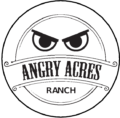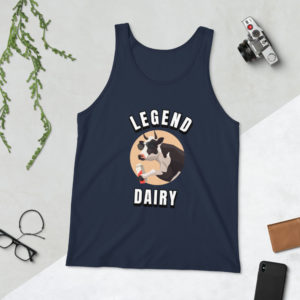Nigerian Dwarf Goats
The Nigerian Dwarf is a modern American breed of dwarf goat. Like the American Pygmy Goat, it derives from the West African Dwarf group of breeds of West Africa.[4]: 416
History
Between about 1930 and 1960 a variety of small goats of the West African Dwarf group of breeds were imported from Africa to the United States to be exhibited in zoos.[2] The Nigerian Dwarf, like the American Pygmy Goat, derives from these, but does not resemble the stocky West African Dwarf in conformation – it has been bred to have the appearance of a miniature dairy goat.[4]: 399 [5]: 35 It was at first reared as a show breed and companion animal; selection was for appearance and for docility.[2] It was later found to be suitable for small-scale dairy production, and some breeding was directed towards dairy qualities.[2] A herd-book was established in 1980.[3]
Numbers grew rapidly; by 2002 there were almost 7000 head registered.[2] The breed was recognized by the American Dairy Goat Association in 2005.[5]: 33 The Nigerian Dwarf was formerly listed on the heritage breeds watchlist of the Livestock Conservancy as "recovering",[2] but was removed from the list in 2013.[6]
In 2023 the total number of the goats in the United States was just under 40000;[3] populations numbering 1000–2000 head are reported by Australia and Canada.[7] In 2024 the international conservation status of the breed was "not at risk".[7]
In the 1990s the Nigora breed was created by cross-breeding the Nigerian Dwarf with Angora and other mohair breeds.[4]: 399
Characteristics

The Nigerian Dwarf is small but well-proportioned; its conformation resembles that of larger dairy goats.[4]: 399 It may be horned or naturally hornless.[2] The coat is fine and fairly short, and may be of any color, or multicolored;[2] common colors are gold, chocolate and black, frequently with white markings. The facial profile may be concave or straight; the ears are upright.[4]: 399 The average weight is approximately 35 kg (75 lb), while maximum height is about 60 cm (24 in) for males and slightly less for females;[4]: 399 stock bred for dairy performance may be rather larger than show or companion animals.[2]
It is a precocious breed – young stock may be bred from an early age: males from about three months, females from seven or eight months.[8] The gestation period is in the range 145–153 days;[8] the twinning rate is high, and triplet and quadruplet births are not uncommon.[4]: 399 [2] Life expectancy is from eight to 12 years.[8]
Use

The Nigerian Dwarf was originally bred for show and as a companion animal. It was later also bred for dairy use.[2] Average milk yield of dairy stock is 340 kg (750 lb) per year;[9]: 284 a yield of 993 kg (2190 lb) in a lactation of 305 days was recorded in 2018.[10]: 3 Lactation usually lasts for about ten months.[2] The milk is high in butterfat and protein, averaging 6.5% and 3.9% respectively,[9]: 284 and is suitable for making cheese and butter.[2]
See also
- Sunflower Farm, a Nigerian Dwarf goat farm
References
- ^ Barbara Rischkowsky, Dafydd Pilling (editors) (2007). List of breeds documented in the Global Databank for Animal Genetic Resources, annex to: The State of the World's Animal Genetic Resources for Food and Agriculture. Rome: Commission on Genetic Resources for Food and Agriculture, Food and Agriculture Organization of the United Nations. ISBN 9789251057629. Archived 23 June 2020.
- ^ a b c d e f g h i j k l m Nigerian Dwarf Goat. American Livestock Breeds Conservancy (now The Livestock Conservancy). Archived 7 March 2010.
- ^ a b c Breed data sheet: Nigerian Dwarf / United States of America (Goat). Domestic Animal Diversity Information System of the Food and Agriculture Organization of the United Nations. Accessed August 2024.
- ^ a b c d e f g Valerie Porter, Lawrence Alderson, Stephen J.G. Hall, D. Phillip Sponenberg (2016). Mason's World Encyclopedia of Livestock Breeds and Breeding (sixth edition). Wallingford: CABI. ISBN 9781780647944.
- ^ a b Jerry Belanger, Sara Thomson Bredesen (2010). Storey's Guide to Raising Dairy Goats, 4th Edition: Breeds, Care, Dairying, Marketing. North Adams, Massachusetts: Storey Publishing. ISBN 9781603425803.
- ^ 2013 Changes to the Conservation Priority List. The Livestock Conservancy. Archived 30 October 2013.
- ^ a b Transboundary breed: Nigerian Dwarf. Domestic Animal Diversity Information System of the Food and Agriculture Organization of the United Nations. Accessed August 2024.
- ^ a b c Dwarf Nigerian Goat. Birmingham, Alabama: Birmingham Zoo. Accessed December 2019.
- ^ a b Y.W. Park and G.F.W. Haenlein (2010). Milk Production. In: Sandra Golpashini Solaiman (editor) (2010). Goat Science and Production. Ames, Iowa: Wiley-Blackwell. ISBN 9780813820620, pages 275–292.
- ^ ADGA 2019 Performance Breed Leaders, volume 66. American Dairy Goat Association. Accessed September 2021.
Our ONLINE SHOP
Check Out Our Gear
-

Legend Dairy Unisex Tank Top
$26.50 – $28.50Price range: $26.50 through $28.50 Select options This product has multiple variants. The options may be chosen on the product pageRated 0 out of 5 -

Logo Short-Sleeve Unisex T-Shirt
$24.00 – $32.00Price range: $24.00 through $32.00 Select options This product has multiple variants. The options may be chosen on the product pageRated 0 out of 5 -

PACA Logo Unisex Hoodie
$44.00 – $52.50Price range: $44.00 through $52.50 Select options This product has multiple variants. The options may be chosen on the product pageRated 0 out of 5 -

Angry Acres Ranch Dad Hat – Gold Logo
$24.50 Select options This product has multiple variants. The options may be chosen on the product pageRated 0 out of 5 -

Bacon Seeds Short-Sleeve Unisex T-Shirt
$26.00 – $34.00Price range: $26.00 through $34.00 Select options This product has multiple variants. The options may be chosen on the product pageRated 0 out of 5






